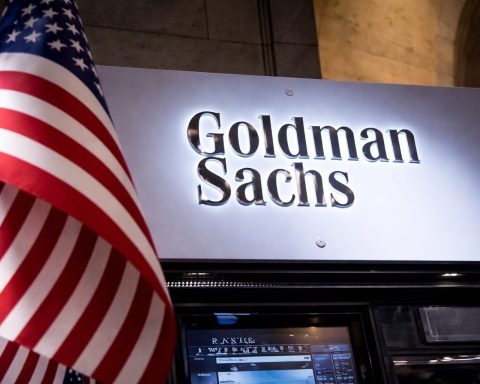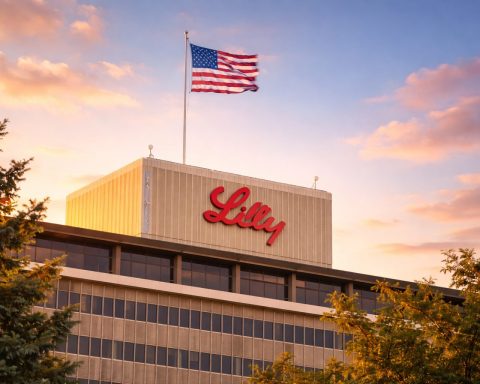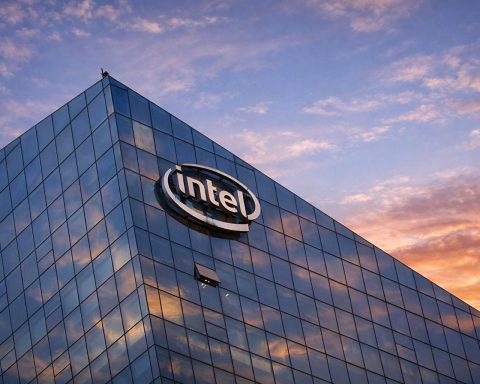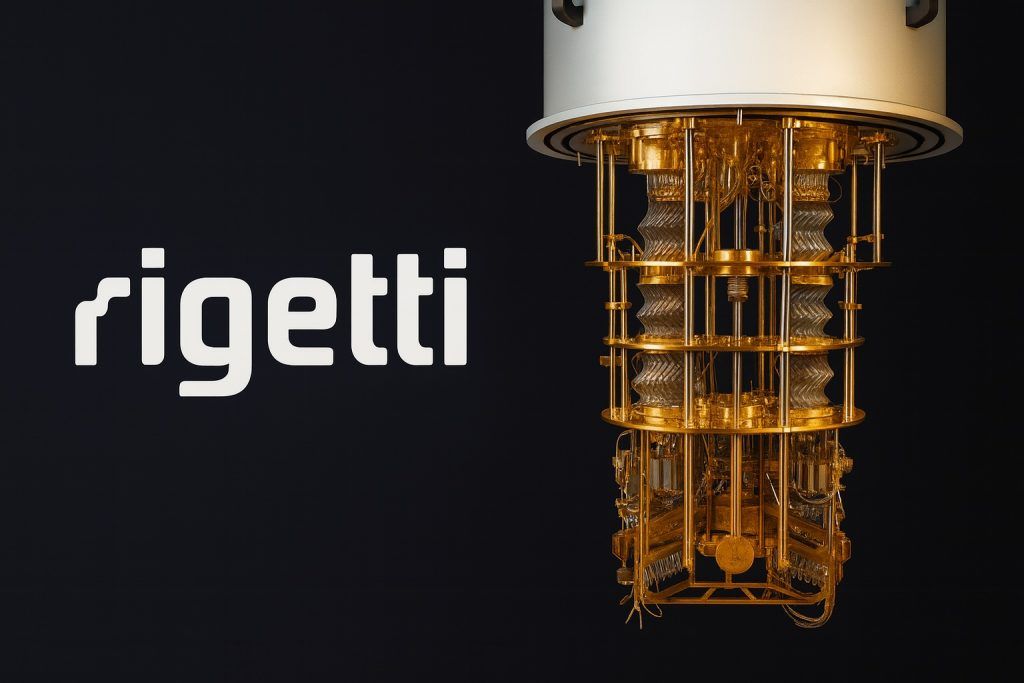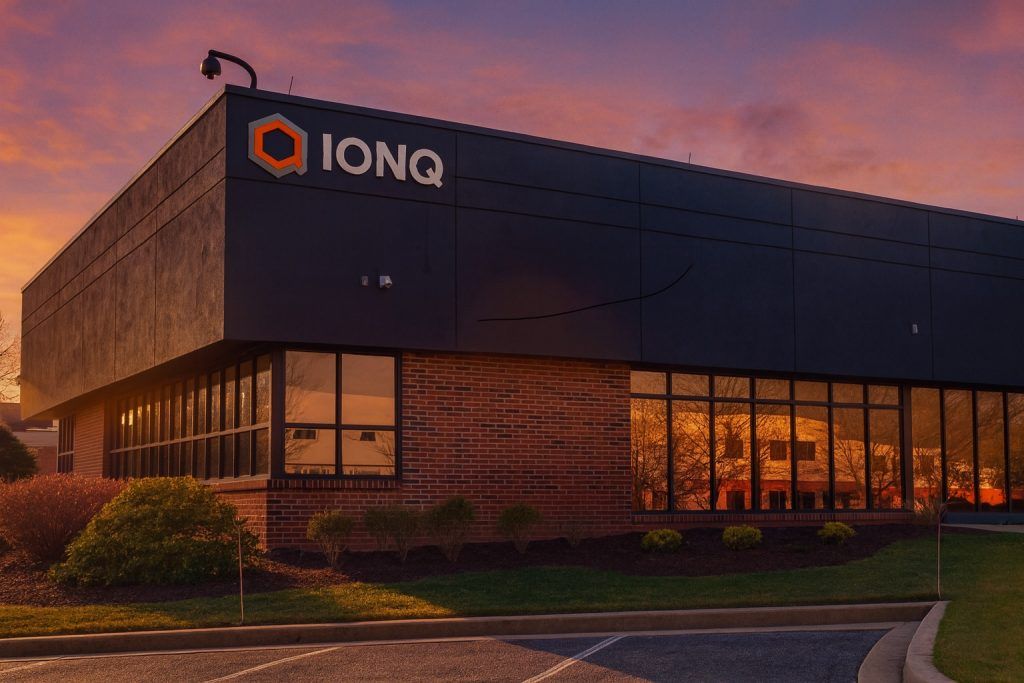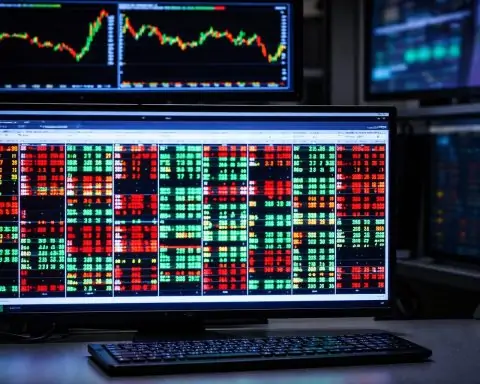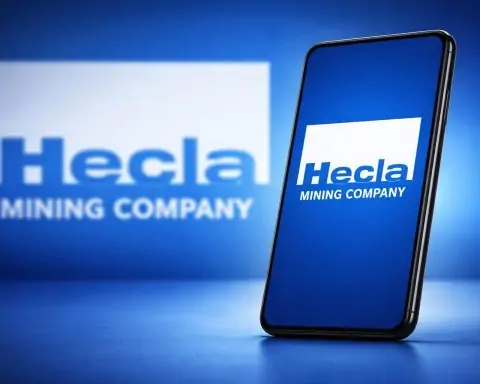- U.S. Commerce Department (under Trump) is reportedly negotiating with leading quantum-computing firms (IonQ, Rigetti Computing, D-Wave Quantum, plus Quantum Computing Inc. and Atom Computing) to take equity stakes in exchange for federal R&D funding [1] [2].
- Each company is said to be discussing roughly $10 million in funding, with government conditions ranging from equity shares to IP licenses and revenue-sharing [3] [4].
- Deputy Commerce Secretary Paul Dabbar (a former quantum-tech executive) is leading the talks [5]. This follows similar moves (e.g. a 10% Intel stake) where the U.S. insisted on ownership in return for taxpayer-backed grants [6] [7].
- The news triggered big swings in “pure-play” quantum stock prices: after a market sell-off on Oct 22 (e.g. D-Wave –15.2%, Rigetti –9%, IonQ –6.8% [8]), shares rebounded sharply overnight as the Journal/Reuters report broke – Rigetti +15.6%, D-Wave +16.3%, IonQ +14.7%, and Quantum Computing Inc. +12.8% [9]. Even the Defiance QTUM quantum ETF jumped ~3% after falling the prior day [10].
- Wall Street analysts remain bullish: all three public quantum names carry “Strong Buy” consensus ratings [11]. High price targets imply more upside – for example, IonQ has targets up to ~$100 (roughly +59%), Rigetti up to $50 (+8%), D-Wave to $50 (+30%) and QCI to $40 (+118%) [12] [13].
Trump Administration’s Quantum Push
Citing Wall Street Journal sources, U.S. officials are now treating commercial quantum computing as a strategic sector. Under Secretary Gina Raimondo’s reorganized Chips R&D Office, the Commerce Department is reportedly willing to “go deep” in quantum startups – becoming shareholders in exchange for government R&D grants [14] [15]. This extends Trump’s “government-as-shareholder” industrial policy in tech; for example, in August the administration agreed to convert nearly $9 billion in CHIPS Act grants into a 10% equity stake in Intel [16] [17]. The quantum proposals would similarly tie about $10 million of support per company to a U.S. equity investment [18] [19]. Commerce sources stress negotiations are ongoing and not finalized; a department spokeswoman noted it is “not currently negotiating” any deal, underscoring that terms could still change [20].
Who’s in Line: The Companies
The firms named – IonQ (NYSE: IONQ), Rigetti Computing (NASDAQ: RGTI), D-Wave Quantum (NYSE: QBTS), Quantum Computing Inc. (NASDAQ: QUBT), and privately-held Atom Computing – are all U.S.-based leaders in quantum hardware. IonQ (based in Maryland) leads with trapped-ion processors and has partnerships (e.g. on cloud with AWS and Microsoft), while Rigetti (in California) builds superconducting “qubit” chips. D-Wave (California) uses a distinct quantum-annealing approach for optimization problems. CEO Yuping Huang of Quantum Computing Inc. said government funding talks are “exciting” for her firm [21]. Rigetti confirmed it is in “ongoing contact with the government” about funding [22]. D-Wave’s government relations head Allison Schwartz noted the company aims to sell quantum systems to help solve federal challenges and to give taxpayers “a return on investment” [23]. Atom Computing (Washington State) and others have quietly indicated interest but so far declined comment.
Beyond startup pure-plays, big tech is also racing ahead. Just the same week as the funding news broke, Google announced a major breakthrough: its new “Willow” quantum chip ran an algorithm 13,000× faster than a classical supercomputer [24]. CEO Sundar Pichai touted this “first-ever verifiable quantum advantage”, showing practical quantum use-cases in drug and materials science could be closer than thought. (By contrast, NVIDIA’s CEO has cautioned that “very useful” quantum computers might be decades away [25] – a comment that briefly sent quantum stocks down 40% in January [26] [27].)
Stock Market Reaction
Investors jumped on the funding talks. Trading platforms flagged quantum tickers as top gainers. In pre-market and after-hours trading, Rigetti surged about +15.6%, D-Wave +16.3%, IonQ +14.7% and Quantum Computing Inc. +12.8% [28]. (A related SPAC, Churchill Capital, up +9% with its quantum merger deal.) This came after a tech sell-off prior, when on Oct 22 D-Wave had plunged 15.2% and Rigetti 9% [29] on other sector news. One newsletter observed that “IonQ…has surged, fueling chatter about a potential stock split,” reflecting how far pure-play quantum stocks have run [30]. Indeed, the gains have been staggering – an analysis noted Rigetti’s shares are up roughly 4,800% in the past year [31], while D-Wave has jumped about 3,590% and IonQ ~412% over 12 months [32].
By mid‑October 2025, IonQ was trading in the high-$60s after briefly touching the low-$70s [33]. (Its chart shows it sitting well above key moving averages, with some analysts eyeing $75 resistance next.) On the downside, Rigetti has bounced from sub-$1 levels (pre-SPAC) to trade in the mid‑$20s this month. D-Wave’s stock, after the swing, settled around $38, still well above last year’s $4 IPO price. Quantum Computing Inc (QUBT) similarly lurched with the news. Overall market sentiment tilts bullish: an ETF tracking quantum/AI companies (QTUM) climbed +3% overnight [34], and retail forums predict “explosive” further moves.
Analysts’ Forecasts and Expert Views
Wall Street’s quant analysts have unusually high conviction. TipRanks data show all three public pure-play names carry “Strong Buy” consensus ratings, with IonQ judged to have the largest upside [35]. Brokers’ 12‑month targets span a wide range – reflecting both hype and risk. For example, Cantor Fitzgerald recently lifted IonQ’s target to $60, Needham to $80, Benchmark to $75 and B. Riley to $100 [36] [37], implying anywhere from modest gains to a 50–80% rally from current levels. Similarly, D-Wave’s Roth Capital analyst set a $50 target (about +30%), Rigetti’s Benchmark target is $50 (+8%), and Quantum Computing Inc.’s Ascendiant sees $40 (a potential +118%) [38] [39].
As one market commentary put it, “Even with previous gains of 400–4,900%, some analysts believe these stocks are just getting started.” [40] However, there are caution flags. Quantum remains an early-stage technology: broad commercial use is still years away. Historical tech booms advise prudence. The Motley Fool noted that despite lofty targets, today’s quantum darlings “may have bit off more than they can chew”, and warned that bubbles in new tech do eventually pop [41] [42]. Investors will be watching whether actual contracts and revenues can justify these sky-high valuations.
The Quantum Race and Beyond
This development is part of a wider geopolitical tech race. Europe and Asia are also pouring funding into quantum. Just days earlier, IonQ joined Italy’s national quantum strategy, co-launching a $100M “Q-Alliance” consortium to create a European quantum hub [43]. China, too, has accelerated quantum spending under its own technology plans. The U.S. funding proposal aims to ensure American companies remain competitive. As one strategist noted, having the federal government as a shareholder is now becoming “the new normal” in tech policy [44].
For investors, the immediate question is stock momentum: can these quantum names keep climbing if the deals close? A strong government commitment could underpin a further rally (even a U.S. Treasury income), but could also bring strings attached (reporting, IP sharing, etc.). In any case, the news has made quantum computing a headline sector and sparked a fresh round of speculation.
Sources: News reports from Reuters, Wall Street Journal, and market analysis (Stocktwits, TipRanks, Motley Fool, etc.) [45] [46] [47] [48] [49] [50] [51] [52] [53] [54] (information current as of Oct 22–23, 2025).
References
1. www.reuters.com, 2. cm.asiae.co.kr, 3. www.reuters.com, 4. cm.asiae.co.kr, 5. www.reuters.com, 6. www.reuters.com, 7. cm.asiae.co.kr, 8. www.tipranks.com, 9. stocktwits.com, 10. stocktwits.com, 11. www.tipranks.com, 12. finviz.com, 13. finviz.com, 14. www.reuters.com, 15. cm.asiae.co.kr, 16. www.reuters.com, 17. cm.asiae.co.kr, 18. www.reuters.com, 19. cm.asiae.co.kr, 20. www.reuters.com, 21. longbridge.com, 22. longbridge.com, 23. longbridge.com, 24. www.ndtv.com, 25. www.reuters.com, 26. www.reuters.com, 27. www.reuters.com, 28. stocktwits.com, 29. www.tipranks.com, 30. ts2.tech, 31. ts2.tech, 32. finviz.com, 33. capital.com, 34. stocktwits.com, 35. www.tipranks.com, 36. capital.com, 37. capital.com, 38. finviz.com, 39. finviz.com, 40. finviz.com, 41. finviz.com, 42. finviz.com, 43. investors.ionq.com, 44. longbridge.com, 45. www.reuters.com, 46. cm.asiae.co.kr, 47. stocktwits.com, 48. ts2.tech, 49. ts2.tech, 50. longbridge.com, 51. www.ndtv.com, 52. www.tipranks.com, 53. finviz.com, 54. finviz.com


